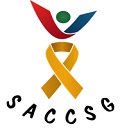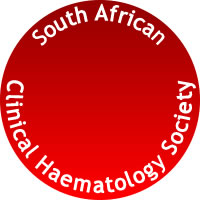Original Research
Testicular germ cell tumours: Outcomes at a tertiary hospital in the Western Cape, South Africa
Submitted: 16 March 2023 | Published: 01 November 2023
About the author(s)
Gérard Grobler, Department of Urology, Faculty of Health Sciences, Stellenbosch University, Cape Town, South AfricaPetrus V. Spies, Department of Urology, Faculty of Health Sciences, Stellenbosch University, Cape Town, South Africa
Henriette Burger, Department of Radiation Oncology, Faculty of Health Sciences, Stellenbosch University, Cape Town, South Africa
Heidi van Deventer, Department of Urology, Faculty of Health Sciences, Stellenbosch University, Cape Town, South Africa
André van der Merwe, Department of Urology, Faculty of Health Sciences, Stellenbosch University, Cape Town, South Africa
Abstract
Background: Testis cancer is a rare malignancy, and there are limited data describing Africa’s clinical characteristics and outcomes.
Aim: We summarised 16 years of South African data, comparing it to available data for Africa and international data.
Setting: The retrospective review included males > 12 years with testicular germ cell tumours diagnosed and treated at Tygerberg Hospital from 01 January 2005 to 31 December 2020.
Methods: Self-declared racial status included Caucasian, mixed ethnicity, African and Asian. Patients were identified from uro-oncology and pathology records indicating any form of testicular cancer. Data were extracted for demographics, staging, treatment and outcomes. In addition, patients were contacted or tracked as part of a living status report by the Department of Home Affairs to determine the last contact date for survival outcomes.
Results: There were 142 patients in the study. The most common risk factor was cryptorchidism (14.1%), but most patients reported no known risk factors (82.4%). Seminomas presented 10 years later than non-seminomatous germ cell tumours (NSGCTs). Having no risk factors seems to be protective hazard ratio (HR) 0.18 and being diagnosed after 40 years carries an increased risk of death. The histopathological classification was fairly equal, with 70 seminoma and 72 NSGCTs. There was no statistical difference in the stage distribution between seminoma and NSGCTs. The overall 5-year survival was 91% for seminoma compared with 78% in NSGCTs. With a time horizon of 15 years, a patient was expected to survive 16% (1.9 years) longer in the seminoma group. Clinical stage (CS) three patients had a higher risk of dying compared with CS1 and CS2, and there was no difference between seminoma and NSGCTs (HR = 12.6).
Conclusion: The clinical characteristics of our patient population correspond to international data. There is a need for better health education to ensure patients present earlier and have access to appropriate medical care.
Contribution: Our data represent the largest series of testis cancer outcomes at a single centre in Africa and the aim is to motivate other centres to describe and analyse their oncological outcomes to ensure we provide the best possible care to all our patients in South Africa’s future.
Keywords
Metrics
Total abstract views: 1387Total article views: 830



